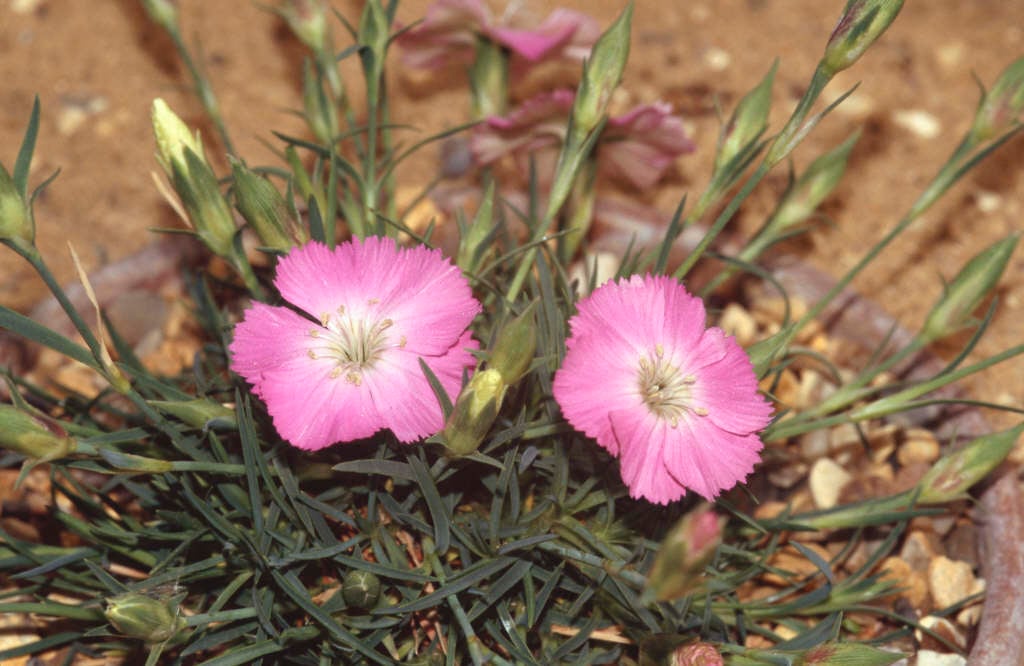Dianthus pavonius
grass rose pink
A cushion-forming evergreen perennial with green or slightly greyish leaves and 10cm stems bearing 1-3 flowers, 2cm wide, with pale or deep pink petals, buff on reverse

Size
Ultimate height
Up to 10cmTime to ultimate height
2–5 yearsUltimate spread
0–0.1 metreGrowing conditions
Moisture
Well–drainedpH
Acid, NeutralColour & scent
| Stem | Flower | Foliage | Fruit | |
| Spring | Green Grey Silver | |||
|---|---|---|---|---|
| Summer | Pink | Green Grey Silver | ||
| Autumn | Green Grey Silver | |||
| Winter | Green Grey Silver |
Position
- Full sun
Aspect
South–facing or West–facing
Exposure
Exposed or Sheltered Hardiness
H7Botanical details
- Family
- Caryophyllaceae
- Native to GB / Ireland
- No
- Foliage
- Evergreen
- Habit
- Bushy
- Potentially harmful
- Humans/Pets: Skin allergen, wear gloves and other protective equipment when handling. For further information and contact numbers regarding pets, see the HTA guide to potentially harmful plants
- Genus
Dianthus can be annuals, evergreen perennials or subshrubs with narrow, often greyish leaves and showy flowers that are frequently fragrant
- Name status
Correct
- Plant range
- SW Alps
How to grow
Cultivation
Grow in well-drained neutral to acid soil in full sun
Propagation
Propagate by seed in containers in a cold frame from autumn to early spring. Take semi-ripe cuttings of non-flowering shoots in summer but these can usually be rooted any time of the year
Suggested planting locations and garden types
- City and courtyard gardens
- Gravel garden
- Rock garden
- Coastal
- Cottage and informal garden
- Patio and container plants
- Banks and slopes
- Flower borders and beds
Pruning
No pruning required
Pests
Diseases
May be susceptible to powdery mildews, a rust, a virus and fusarium wilt
Get involved
The Royal Horticultural Society is the UK’s leading gardening charity. We aim to enrich everyone’s life through plants, and make the UK a greener and more beautiful place.